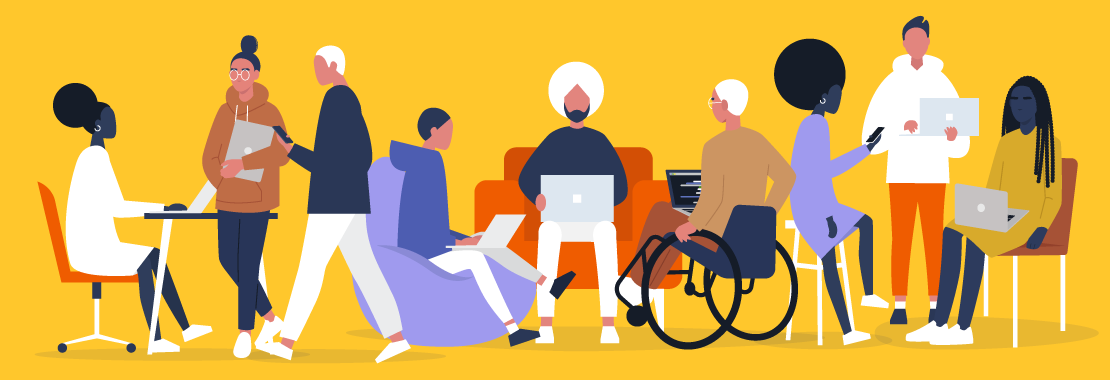Elyse Adler is an Assistant Professor of Information Technology
Being inclusive in the classroom has various elements that can—and should—be considered. Not only does inclusivity refer to racial, ethnic, gender and spiritual elements, it also includes learning needs and differences. As educators, navigating all the various needs and perspectives of students can feel overwhelming, but it is possible to traverse these waters with just a little bit of foresight and planning.
Inclusivity in the classroom
As defined by the University of Florida’s Center for Teaching Excellence, inclusivity in education “refers to a variety of teaching approaches that strive to address the needs of all students…[it] provides a learning experience that allows students from all backgrounds, learning styles and abilities to be successful.” In order to achieve this level of inclusivity, it is important to make “all students feel equally valued…[it] implies that the classroom environment is one in which all students feel that their contributions and perspectives are equally valued and respected.” According to the Inclusive Schools Network, inclusive education provides for “all students…[to be] full and accepted members of their school community, in which their educational setting is the same as their non-disabled peers.”
So, how do we do this in our own classrooms? One way is by modeling respectful attitudes towards our students and their differences. We can do this several different ways, including:
- Utilizing diverse examples in our teaching—this includes using a wide range of names, genders, cultures and beliefs.
- Showing respect for the differing opinions that our students may present in class discussions, even if they do not align with our own personal perspectives.
- Not making assumptions about those individuals that are different than ourselves.
- Ensuring we are not showing any bias towards individuals of a specific culture, gender or belief.
Being inclusive in our classrooms presents us with opportunities to allow students to share their differences. Because peers can learn from each other, class discussions that allow for the presentation of various views and perspectives can facilitate and encourage conversations on issues of diversity. Additionally, as the instructor, we can include different perspectives in our lessons by presenting points of view from a variety of backgrounds.
Inclusivity in learning
Another side of inclusion is that of learning needs and differences. It is inevitable that we will have students with learning disabilities and difficulties in our classrooms. By law, we are required to educate these students in the least restrictive environment. At the college and university levels, this means that we will need to provide accommodations for those students in our class who may have documented disabilities. Most schools will provide you with a list of the requirements for a student with accommodations—take advantage of this, it will make your job much easier!
Not all students have learning disabilities, but ALL students learn differently. Some students learn better hands-on, others need to read the material and some may need to hear the information presented. We can provide learning opportunities that cover all of these areas for our students—lectures, reading assignments, activities and experiments are just a few ways we naturally handle this. Additionally, we can provide variety in our assignments. Do not just assign tests or papers as this may not allow all students to adequately show their knowledge. Instead, provide opportunities for students to demonstrate their learning in a variety of formats.
Curious how other educators foster inclusivity in their courses?

